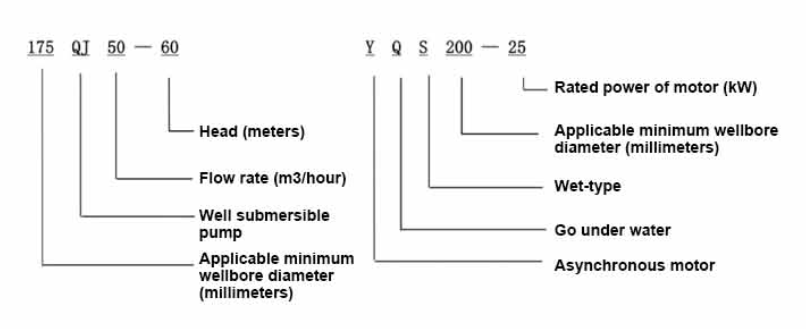સપ્ટેમ્બર . 12, 2024 09:15 Back to list
Submersible Water Pump Not Pumping Water? Troubleshooting Guide & Solutions
Troubleshooting a Submersible Water Pump That Is Not Pumping Water
Submersible water pumps are typically reliable and efficient devices used to move water from various sources, such as wells, basements, or even septic tanks. However, like any mechanical device, they can occasionally fail to perform as expected. If your submersible pump is not pumping water, it can be frustrating and concerning. Here are some common issues to consider and steps to troubleshoot the problem.
1. Power Supply Issues
The first thing to check when your submersible pump fails to pump water is the power supply. Ensure that the pump is properly plugged in and that the outlet is functioning. You can test the outlet with another appliance to confirm that it has power. Additionally, check for any blown fuses or tripped circuit breakers in your electrical panel. If the pump is hardwired, inspect the wiring and connections for any signs of damage or corrosion.
2. Clogged Intake Screen
Submersible pumps often have an intake screen designed to prevent debris from entering the pump motor. Over time, this screen can become clogged with dirt, sand, or other materials, significantly reducing the pump's efficiency. To address this, remove the pump from the water source and inspect the intake screen. Clean it thoroughly to remove any blockages, as this will help restore proper water flow.
The impeller is a crucial component of the pump that helps generate water flow. If the impeller is damaged, jammed, or corroded, it can prevent the pump from functioning correctly. To inspect the impeller, you will need to disassemble the pump. Look for any visible signs of wear or obstruction. If the impeller is damaged, it may need to be replaced to restore the pump’s performance.
submersible water pump not pumping water

4. Float Switch Malfunction
Many submersible pumps are equipped with a float switch that automatically turns the pump on and off based on the water level. If this switch malfunctions, the pump may not engage when needed. Inspect the float switch for any obstructions or damage. Ensure it can move freely and is not stuck in a position that prevents activation. If the float switch is defective, it may need to be replaced for the pump to operate correctly.
5. Air Lock Issues
Sometimes, air can become trapped in the pump, creating an air lock that prevents water from flowing. To resolve this issue, try tilting the pump slightly to allow trapped air to escape. Additionally, you can check the discharge pipe for any high points where air might be accumulating. Adjusting the piping or making small changes to the installation can help eliminate air lock issues.
6. Assessing Depth and Water Availability
Finally, ensure that the water level is high enough for the pump to operate efficiently. If the water level is too low, the pump may not be submerged adequately, leading to dry running, which can cause significant damage to the pump. Assess the water availability and ensure that your pump is situated in a location that provides adequate water supply.
Conclusion
Identifying the cause of a submersible water pump not pumping water may require some troubleshooting. By systematically checking the power supply, inspecting for clogs or damage, and ensuring proper water levels, you can often diagnose and resolve the issue. Regular maintenance and inspection will help to keep your pump running efficiently and extend its lifespan. If problems persist despite your efforts, consider consulting a professional to assess the situation.
-
Water Pumps: Solutions for Every Need
NewsJul.30,2025
-
Submersible Well Pumps: Reliable Water Solutions
NewsJul.30,2025
-
Stainless Steel Water Pumps: Quality and Durability
NewsJul.30,2025
-
Powerful Water Pumps: Your Solution for Efficient Water Management
NewsJul.30,2025
-
Oil vs Water Filled Submersible Pumps: Which is Better?
NewsJul.30,2025
-
Deep Well Pumps: Power and Reliability
NewsJul.30,2025
-
 Water Pumps: Solutions for Every NeedWhen it comes to handling dirty water, the dirty water pump is a must-have.Detail
Water Pumps: Solutions for Every NeedWhen it comes to handling dirty water, the dirty water pump is a must-have.Detail -
 Submersible Well Pumps: Reliable Water SolutionsWhen it comes to ensuring a reliable water supply, submersible well pumps are a top choice.Detail
Submersible Well Pumps: Reliable Water SolutionsWhen it comes to ensuring a reliable water supply, submersible well pumps are a top choice.Detail -
 Stainless Steel Water Pumps: Quality and DurabilityWhen it comes to choosing a water pump, the stainless steel water pump price is a crucial factor.Detail
Stainless Steel Water Pumps: Quality and DurabilityWhen it comes to choosing a water pump, the stainless steel water pump price is a crucial factor.Detail
